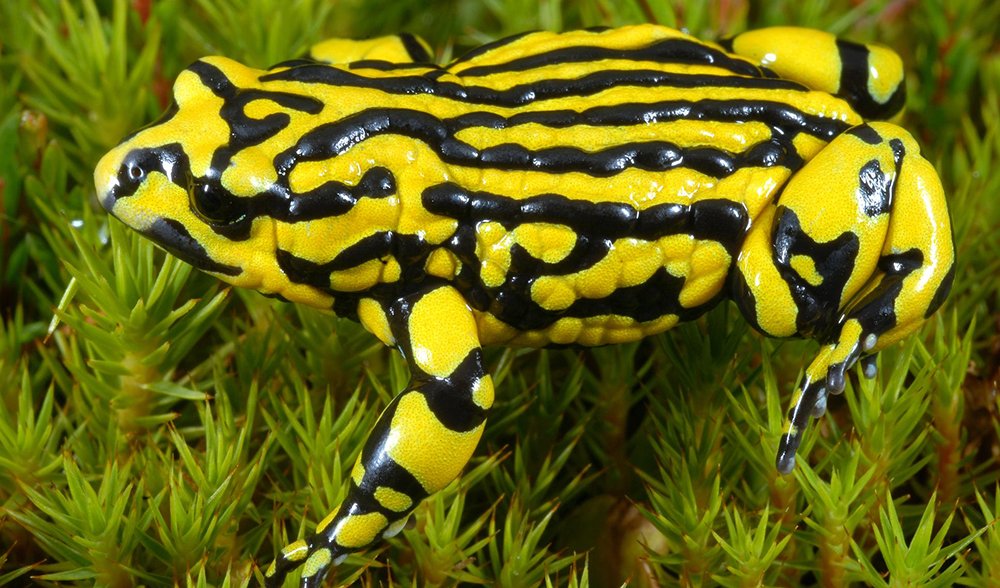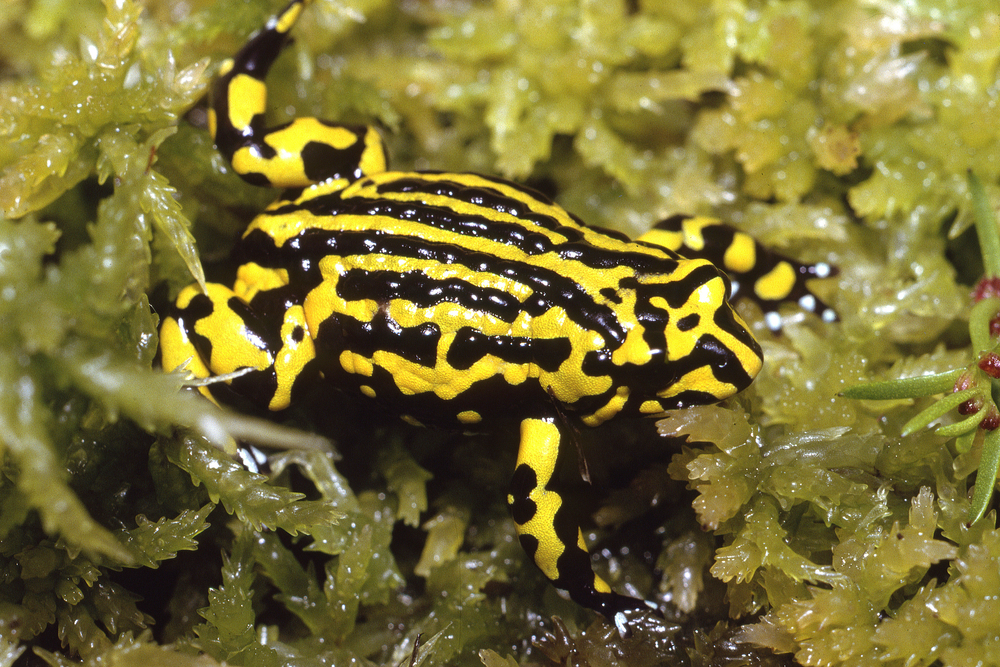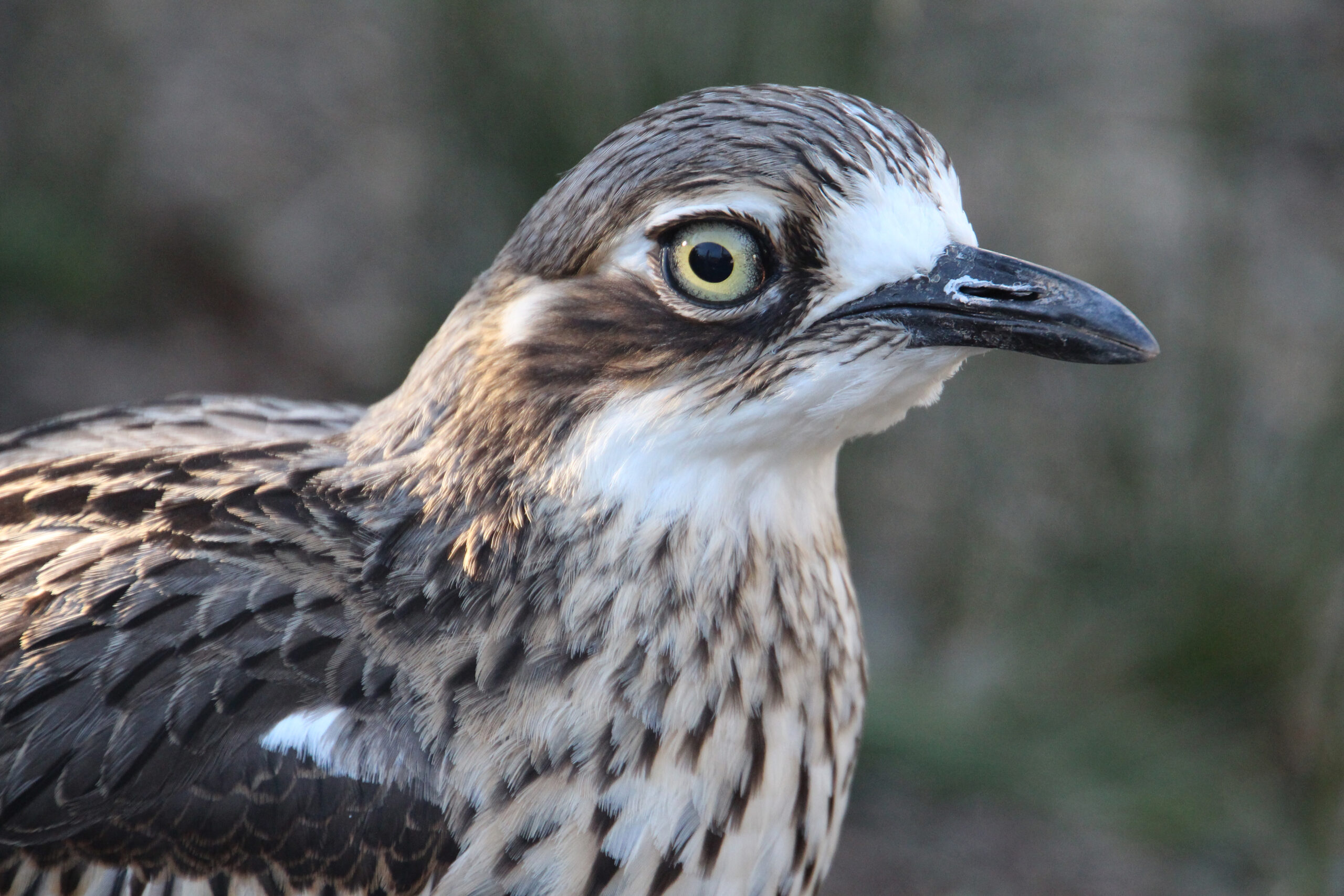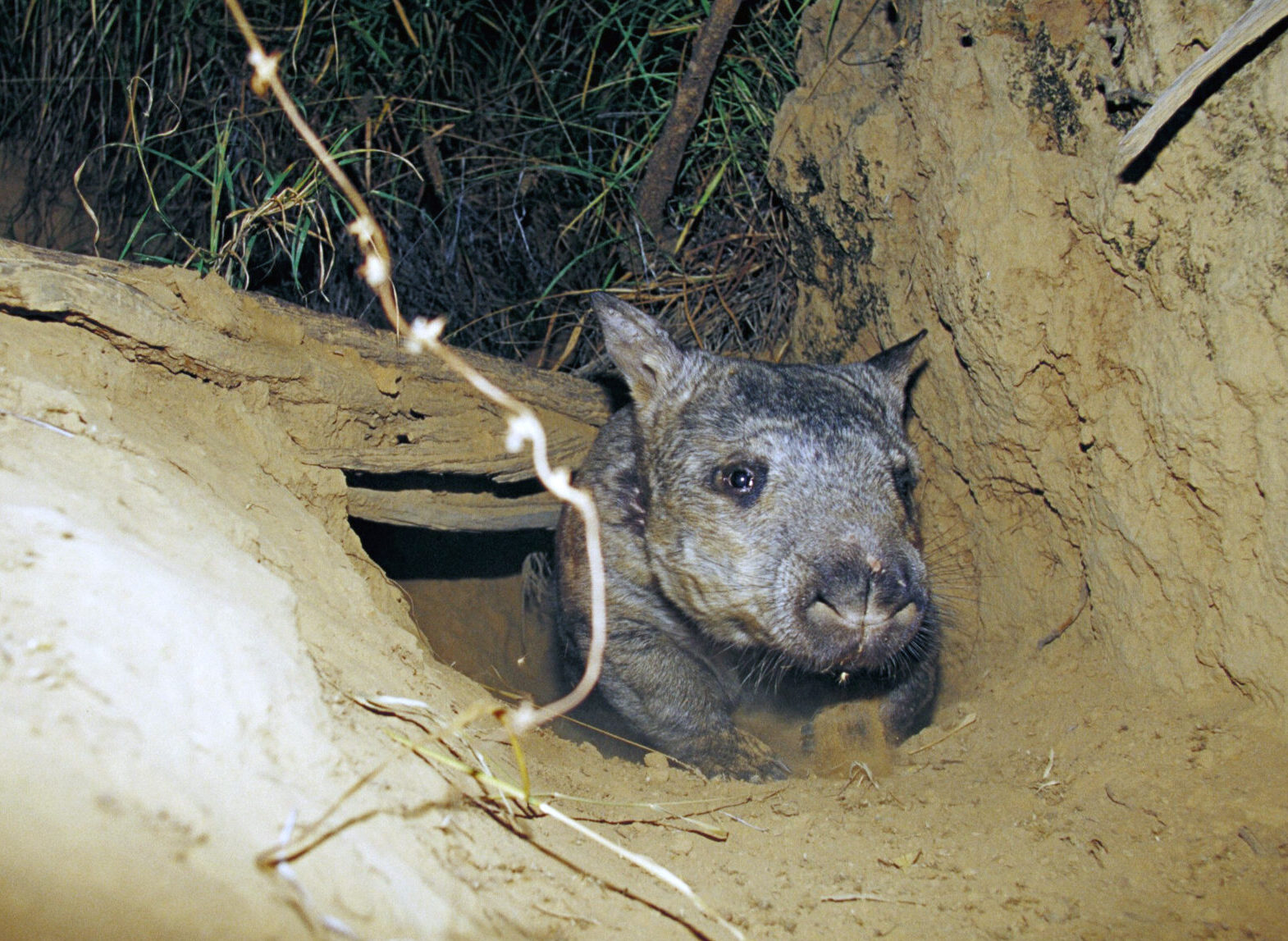| Common name | Corroboree frog |
| Scientific name | Pseudophryne pengilleyi (Northern), Pseudophryne corroboree (Southern) |
| Type | Amphibian |
| Diet | Carnivorous, eating small black ants and other invertebrates |
| Average lifespan | Up to 9 years |
| Size | Between 2.5cm and 3cm in length, up to 3 grams in weight |
Despite being one of the most recognised and iconic amphibians on the continent, the corroboree frog, with its striking yellow and black longitudinal stripes, is critically endangered.
One of the most visually dramatic frogs in the world, there are two closely related species of corroboree frog, the southern (Pseudophryne corroboree) and the northern (Pseudophryne pengilleyi). Both frogs have plummeted in numbers over the past three decades due largely to a disease known as chytridiomycosis, caused by infection with the amphibian chytrid fungus.
Although recognised worldwide, this frog is only found within a small area of south-eastern New South Wales. The southern corroboree frog is found in the Snowy Mountains Regions of Kosciusko National Park in New South Wales at altitudes between 1300–1700m, with the northern corroboree frog found in New South Wales and the Australian Capital Territory within Kosciuszko National Park, Bondo State Forest, Micalong State Forest, Wee Jasper State Forest, Namadgi National Park, Brindabella National Park and Bimberi Nature Reserve.


The corroboree frog survives in a variety of habitats including montane forest, sub-alpine woodland, and tall heath close to breeding areas. Breeding can take place within wet tussock grasslands, ferns, and wet heath, as well as pools and seepages in sphagnum bogs – some of which are dry during the breeding season. Often found seeking shelter under layered leaf litter, or logs or rocks, the frog can travel over 300m into nearby woodland after breeding.
This paperclip-sized frog has distinct longitudinal stripes of yellow or green, alternating with black along the upper side of their back. The southern corroboree frog always has bright yellow stripes, while the stripes of the northern corroboree frog can range from yellow to lime green. The underside of both species is marked with black, yellow, or lime green and has white blotches. The two species differ in colour patterns, morphology, and skin biochemistry. Tadpoles from both species are dark with a long paddle-shaped tail and will grow to 30mm in length.

When it comes to dinner time, the nocturnal corroboree frog enjoys a meal of small invertebrate. Favouring small black ants, this colourful amphibian will also munch on beetles, and insect larvae. Corroboree tadpoles play an important role within the alpine ecosystem by eating algae, helping to keep ponds clean and nutrient-rich for other flora and fauna.
Just like other amphibians, the corroboree frog begins life as a tadpole before developing into a frog. Eggs enter a diapause stage where the embryos pause in development until the nests containing the eggs are flooded thanks to autumn or winter rains, stimulating them to hatch. Moving out of the nest site, the tadpoles then live for the rest of their larval period as a free swimming and feeding tadpole, until metamorphosis in summer.


The bright colours that make these frogs so beautiful have a more sinister purpose: helping the amphibian to warn would-be predators that their skin is, in fact, extremely poisonous. The corroboree frog’s vibrant yet toxic skin produces and secretes alkaloids that are poisonous to mammals who attempt to get too close.
With less than 50 individual southern corroboree frogs left in the wild, both species of the corroboree frog are listed as critically endangered. Weed invasion, changing weather patterns due to climate change, habitat loss or degradation from forestry and introduced pest species such as feral pigs and horses have all had a negative impact on population numbers across their ranges.
The corroboree frog has been most severely impacted, however, by the deadly disease chytridiomycosis, which is caused by infection with the amphibian chytrid fungus or Batrachochytrium dendrobatidis.
Transmitted through water systems or other animals, this lethal disease attacks the frog’s skin and heart. Captive breeding programs have been developed in an attempt to save this special species from extinction.





